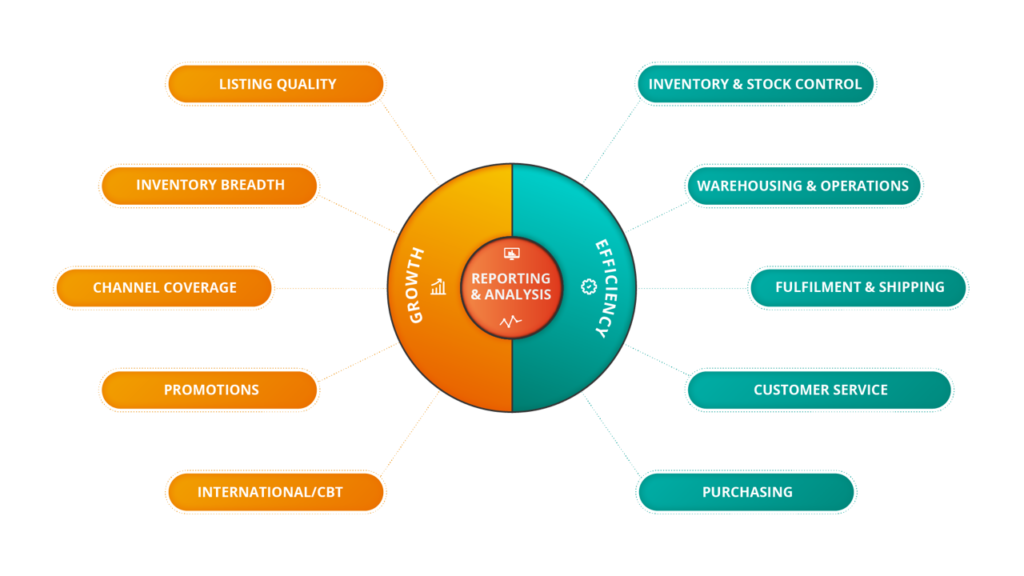The Levers of eCommerce Growth and Efficiency
This post introduces a structured way of thinking about what’s important for growing ecommerce business and improving efficiencies for increased sales, profitability and ecommerce growth.
Many people like structure. They like to understand the rules of the game and the limits or boundaries within which they play. Structure gives direction, purpose and a framework. A framework for thinking that helps you make sure you’ve checked all the boxes, considered all the angles, covered all the bases.
When it comes to ecommerce, it’s easy to feel overwhelmed. There are so many possibilities, dependencies, moving parts and outside factors to consider. We know we should keep it simple, but that’s easier said than done. Where should you concentrate? How should you prioritise? Where do you go from here?
A framework, like Michael Porter’s Five Forces model for example, for understanding your industry and thinking about where you want to take your business is a useful checklist to make sure you’re not missing a major trick. At Volo we’ve recommended our lever model for many years to help our customers set their priorities for growth and profitability. The levers of ecommerce growth and efficiency are the ten main possible throttles you have at your disposal.
Which levers you pull, and how much you pull them, is down to you, your unique business circumstances and your ambitions for the future. Let’s look at the lever model in a bit more detail.
The Levers eCommerce Growth and Efficiency

- Listing Quality. How good your listings are at attracting and converting buyers
- Inventory Breadth. How many products and variations you have on offer
- Channel Coverage. How many and which marketplaces and web store ecommerce platforms you’re present on
- Promotions. What tools you’re using to increase visibility of your products
- International/CBT. Which regions or countries you’re choosing to sell in and ship to
On the right side of the diagram, five of the levers affect your efficiency – how efficiently you run your business – which has a direct bearing on your profitability. Again, the more you pull each lever, the more you should increase your efficiencies.
- Inventory & Stock Control. How well your supply of product meets the demand
- Warehousing & Operations. How well you organise the movement of product in your business
- Fulfilment & Shipping. How well you manage the processing and delivery of customer orders
- Customer Service. How well you manage your buyer relationships, returns, credits and refunds
There are ten levers in the model. On the left side, five of the levers feed directly into growth. The more you pull each lever, the more your sales should grow.
All of these levers are about data, information you use to determine how you’re currently doing and what you need to do from here. That’s why reporting and analytics – access to and insight from accurate data presented in useful ways – sits in the middle of all ten levers, governing visibility into performance.
Successful ecommerce businesses have a vice-like grip on their data and use that knowledge to decide how they’re going to grow their sales and drive efficiencies to hit the targets they’ve set for the business. In future posts we’re going to delve further into each of these levers to understand more fully how they impact top line revenues and bottom line margins, to help you decide which of them are priorities for you in 2022.
For a structured discussion into the levers impacting your own business, please send us a note here.
